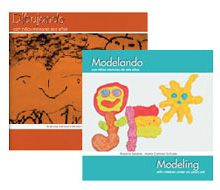ExchangeEveryDay Past Issues
 << Previous Issue
| View Past Issues | | Next Issue >>
<< Previous Issue
| View Past Issues | | Next Issue >> -Carol Channing at 82
The Inter-American Development Bank released in December a study, "Measuring Education Quality in Brazil," and shared with ExchangeEveryDay by Aimee Verdisco, on the quality of care being provided in crèches (programs serving infants and toddlers) in Brazil. Key findings include...
- Overall, the results of this study find latitude for improving the quality of services provided in Brazil’s crèches and preschools, particularly in terms of what goes on inside the bricks and mortar.
- Interior spaces are generally classified as “basic" — furniture available for daily classroom activities and resources available for providing comfort to children appear as “inadequate.” This raises safety concerns, among others.
- "Activities” — the heart of the pedagogical model implemented in classrooms and thought to be essential building blocks for ensuring positive outcomes in school and later in life — are an area requiring attention from policy makers.
- Poorest performance was found in activities in dramatic play and in nature and science, suggesting that few, if any, opportunities exist for children in the tested centers to explore the world around them and engage in language-rich activities.
- Similarly, activities related to using blocks, which are quite universally recognized as important for developing basic notions of number, size and problem-solving, received one of the lowest scores.
 You'll save 20% when you purchase both Dibujando / Drawing with Children and Modelando / Modeling with children under six years old (regularly $10 each).
You'll save 20% when you purchase both Dibujando / Drawing with Children and Modelando / Modeling with children under six years old (regularly $10 each).
Dibujando con Niños / Drawing with Children
Authors, Roxana Salazar and Maria Carmen Schulze, describe in words (English and Spanish) and photos their work in Bolivia teaching children to draw using elements in their natural environment. This short (24 pages) book combines both a theoretical framework as well as real life examples, woven together by the amazing passion of the authors.
Modelando con ninos menores de seis anos / Modeling with children under six years old
Children represent their understandings and develop hypotheses through modeling with clay. Stunning photography and text in English and Spanish share the authors' premise that children can learn and express themselves through materials, given the nurturing of adults who see the possibilities in the resources and the potential of each child.
ExchangeEveryDay
Delivered five days a week containing news, success stories, solutions, trend reports, and much more.
What is ExchangeEveryDay?
ExchangeEveryDay is the official electronic newsletter for Exchange Press. It is delivered five days a week containing news stories, success stories, solutions, trend reports, and much more.
Join 25,000 other child care centers just like yours that now operate more efficiently than ever before using our software & check-in solutions.

New ideas from national experts:
* Inclusion
* Literacy
* Standards
* Technology
* Dual Languages
* Bullying
* CDA Facilitation
* Management
* Behavior
* Outdoor Play
* Elementary Principals
www.ECEwebinars.com


Comments (2)
Displaying All 2 CommentsUnited States
First, I want to thank Exchange Every Day for looking at early childhood programs in Brazil, the huge country to the south. I hope to see other reports in the future, and would love to see a World Forum Conference in Brazil. I have worked in Brazil off and on since 1997. It is important to understand there are essentially three approaches to caring for young children in Brazil: 1) house maids/servants, who work in all middle-class homes, cooking and caring for children, 2) private kindergartens (any private program before school-age), and 3) creches. Creches are for the poor children, and are run by churches, cites, not-for-profits, etc. This report is kind: most creches I have visited are terrible. They have lots of children, extremely poor and cramped indoor space, with poor lighting, and essentially no outdoor play environments. While children cared for by maids use city parks and other municipal play areas, these children do not. The report did not even address the women and girls who work with these children, but I don't believe they have any college education at all. Some states allow teachers in public schools to only have a high school diploma. Creches in Brazil are largely custodial. Even the food is minimal. And the program focuses on custodial care and "school".
United States
I wonder if through their culture creates other opportunities for open-ended play within their home environments that helps to offset some of this.
Post a Comment